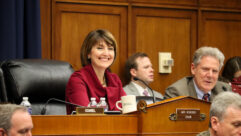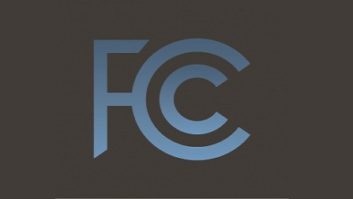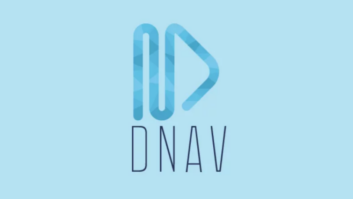The licensing process
Jun 1, 2001 12:00 PM, By John Battison, P.E., technical editor, RF
Whoever said, �the more things change, the more they remain the same,� must have had the FCC in mind. More than 50 years ago, Form 301 was thin and did not demand much in the way of exhibits. Today, Form 301, still thin and demanding little in the way of exhibits, requires many statements of fact that must be backed up by full engineering analysis so that exhibits can be presented on demand. However, today’s Form 301 must be filed electronically.
It is also illuminating to compare the Commission’s present day paperwork requirements with those of 50 years ago. Nowadays, there are more forms to be completed, and the Commission is requesting data in forms that are more examiner-convenient than the original Form 301. I think the latter was designed to get the information displayed in a relatively easy manner for the applicant without much consideration for the examining engineer.
In this article we’re going to run through the engineering process of getting a license for a broadcast station and talk about the new electronic filing forms. It is important to bear in mind that, apart from technical matters, the FCC has sticky fingers and expects its palm to be greased with every application, using Form 159 when sending cash, and 175 in the cases of auctions. However, these forms are best left in the hands of the attorneys.
Getting a construction permit
In the interest of correctness, I like to emphasize the fact that the first step in building a broadcast station is obtaining a Construction Permit (CP). Too many times we find the expression �getting a license� is used in the press and the daily papers. That’s fine for non-technical people, but �getting a license� is very different from �getting a CP,� and it has a different meaning.
Before starting work on a new broadcast application, it is important to check with the FCC to be sure that the appropriate window will be open. The Commission tends to require windows for almost everything; perhaps in an effort to control workflow to their overloaded engineers.
At the same time, be sure that a current application form is used. Many changes are being made. Sometimes it seems that monthly changes are occurring, and it’s important to check expiration dates. The current OMB approval data appears in the upper right-hand corner. The expiration data appears in the bottom right corner. Also be sure to use the latest rules; these seem to change frequently nowadays.
At the time of writing this, the old AM DA proof of Performance Rules apply. However, there is a Notice of Proposed Rule Making (NPRM) proposing some substantial changes and reduction in required field work. By now, the new Rules may be in force.
The first step towards a CP is finding a frequency, unless it is intended to file on an existing station or an identified frequency. The next step is obtaining and reading a copy of CFR 47, the FCC Rules and Regulations. Although most of the rules governing the completion of Form 301 can be found in Part 73 of the Rules, there are a few paragraphs in other sections of CFR 47 that require reference prior to submitting the application.
Today’s FCC will not accept Form 301 on paper. The filing must be electronic. This means that the filing is more of a statement of intent than a technical document, as in the old days when voluminous documentation had to be submitted. It seems that with the advent of Docket 80-90, the FCC has become window oriented. It is almost impossible now to file any application unless the appropriate window is open, and it is essential to keep an eye on FCC releases.
In my opinion, the new engineering data portions of Form 301 are important improvements to the Form, although they can be a dangerous trap for a careless filer. Almost every page of the Form calls for the repetition of technical data entered on previous pages. It is easy to make a typographical error from page to page, with disastrous consequences: any inconsistency will result in return of the application.
On the old Forms antenna data was requested once, but on the new forms it seems to be required frequently, and every entry is a possible source of error and rejection. Non-DA and day and night directional operation data are requested on separate pages, for a total of 10. This feature is a great improvement on the old system.
In the case of un-tamable directional antennas, augmentation data are requested and clearly outlined. This format makes the FCC engineer’s job a lot easier, but it puts more stress on the applicant engineer because of the earlier mentioned risk of conflicting entries and consequent dismissal. In lieu of presenting pages of expensive drafting work to demonstrate that the system will work as proposed, many boxes must be checked yes or no, and other boxes show compliance with parts of Part 73.
The page requesting data on operation during critical hours is a good idea. It can be easy to forget that such things as critical hour operation have to be considered when racing against time. I missed a critical hours check on a Form 301 about 40 years ago. The critical hours section would have prevented my embarrassment, and I hope it will save engineers in the future. It’s very easy to say that a good engineer would think of it; but sometimes in a rush things are overlooked until too late.
Form 301 FM
Form 301 for FM requires two pages of technical information and the checking of about ten boxes to show compliance with several paragraphs of Part 73 and other parts.
Unlike AM DA applications, FM DA data is not supplied with Form 301FM. Instead, the desired relative fields are listed (after consultation with the antenna supplier to ensure that they produce a DA with the required pattern), and the application is based on that data.
When the CP is issued and equipment ordered, the antenna supplier runs a pattern proof on the actual antenna and/or a scale model. This material is filed with Form 302FM when making application for the station license, in much the same manner as AM DA license application is filed. The main difference is that, in the case of FM DAs, the FCC accepts the promise of the proposed DA pattern, avoiding checking the whole application.
Licensing AM DAs involves making a number of radial measurements to demonstrate that the promised pattern has been achieved and that the antenna is operating as promised. This is known as the Proof of Performance, and it takes weeks to make and analyze the radials runs and produce the exhibits the FCC needs. The AM Proof of Performance is expensive and time consuming. The FM DA testing proof is not as costly as for AM DAs.
Barring conflicting applications, errors, petitions to deny or other problems, the application is accepted. One then begins to wait, and wait, and wait.
E-mail John at [email protected].
Note: Form 301 is used as a generic term in this article, the same things apply for all versions of Form 340 (NCE) as well.












